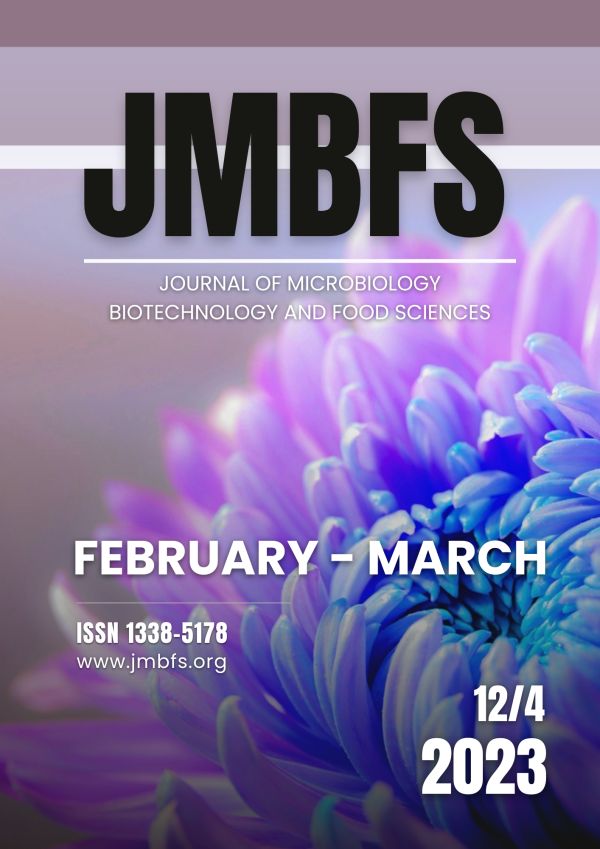VITALITY AND BACTERIOLOGICAL PROFILE OF LIPTOV BOLD-SPOTTED RABBIT SEMEN
DOI:
https://doi.org/10.55251/jmbfs.9724Keywords:
rabbit, semen, motility, viability, microbiologyAbstract
Since semen quality is important for the successful artificial insemination (AI) or cryopreservation, we focused on the evaluation of Slovak national rabbit breeds, New Zealand rabbit and Liptov Bold-Spotted rabbit semen as a possible source of gene reserve. Besides standard sperm traits such as motility, viability, acrosome integrity, and oxidative damage (ROS), bacterial profiles were also assessed in semen samples of New Zealand rabbit (control; n=2; N1 and N2) and Liptov Bold-Spotted rabbit (experimental; n=2; L2 and L4). After initial analysis, samples were divided into good (>70%) and poor (<70%) quality samples according to motility and viability. The results showed significantly higher (P<0.05) totally motile spermatozoa in N1, N2 (76.53±1.22%; 77.30±1.22%) compared to L2 (35.86±5.39%) as well as higher progressively motile spermatozoa in N1 (60.53±1.35%) and N2 (68.13±4.14%) compared to L2 (24.16±1.95%). However, no significant differences in L4 (45.11±4.05%) compared to other groups were recorded. The proportion of dead/live, apoptotic, acrosome damaged, mitochondrial active and ROS produced rabbit sperm was assessed via flow cytometry using fluorescent dyes: DRAQ7, SYBR-14, Yo-Pro-1, PNA, MitoTracker and CellROX, respectively. Significant (p<0.05) decrease of live sperm was observed in L4 (42.73±6.89%) compared to N1 (75.22±5.75%) sample. In adittion, significant (p<0.05) increased presence of dead sperm was in L4 (41.20±10.16%) group compared to N2 (11.16±3.01%). The activity of rabbit sperm mitochondria assessed via mitochondrial membrane potential was significantly (p<0.05) higher in N1 (93.37±1.46%) and N2 (94.35±0.74%) compared to L4 (57.34±1.92). The results from the bacteriological analysis showed that the sperm in good quality (N1 and N2) contained mainly microbial genus such as Brevundimonas, Brevibacterium, Bacillus or Achromobacter. Other samples with poor quality (L2, L4) contained different kind of bacterial genus such as Pseudomonas, Delftia, Acidovorax, Acinetobacter or Staphylococcus. Although the microorganism profile appeared different, obligate pathogenic species were not present. Therefore, further analyses are needed to find out the reason of poor semen quality.
Downloads
Downloads
Published
How to Cite
Issue
Section
License
Copyright (c) 2022 Andrea Svoradová, Lukáš Hleba, Jakub Vozaf, Jaromír Vašíček, Roksolana Nykdaichuk, Alexander Ostró, Peter Chrenek

This work is licensed under a Creative Commons Attribution 4.0 International License.
All papers published in the Journal of Microbiology, Biotechnology and Food Sciences are published under a CC-BY licence (CC-BY 4.0). Published materials can be shared (copy and redistribute the material in any medium or format) and adapted (remix, transform, and build upon the material for any purpose, even commercially) with specifying the author(s).





